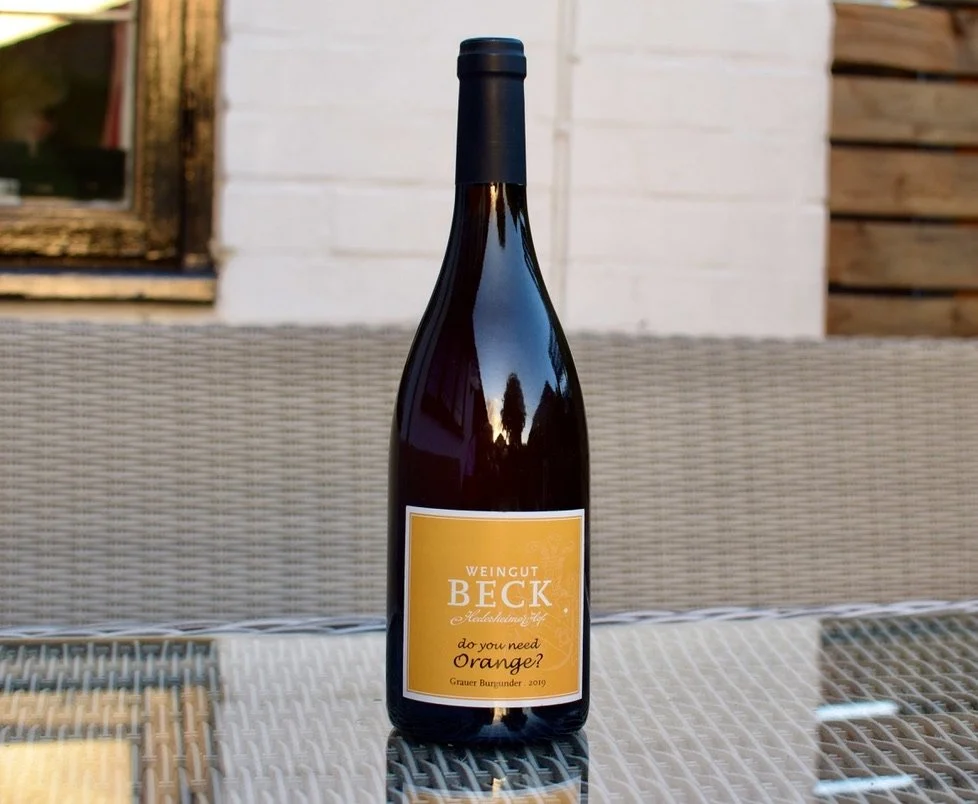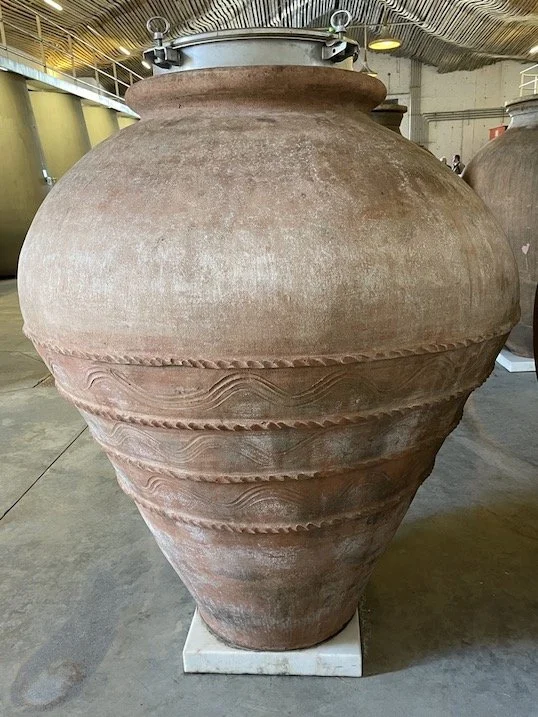What is a natural wine?
Here we discuss the main features of ‘natural wine’ - a growing wine trend - and its 2 wine styles, orange wine and pét nat sparkling wine
The production of natural wine avoids chemical intervention during the winemaking process, with no additives and minimal additions of sulfur dioxide, preferably none at all. In its purest form, natural wine is wine made from unadulterated fermented grape juice and nothing else.
The ‘natural wine’ movement originated in rural France, initially in Beaujolais as far back as the 1960s, but since then it has gathered pace and is now a popular and growing trend all across the world, especially in metropolitan cities and with a younger generation concerned about climate change and challenges to the environment.
However, despite being a modern trend in response to concerns about over-use of chemical products and sulfur in wine, the ‘natural wine’ production process is nothing new. People have been making fermented grape juice without additives for thousands of years and it’s essentially the traditional way to make wine.
Intervention in the winemaking process
‘Natural wine’ is the most common term used, but it is often referred to as ‘low-intervention’ wine. In contrast, ‘conventional, non-natural wine’ is defined by technical intervention.
Intervention in the winemaking process occurs both in the vineyard - in terms of growing and picking the grapes - and in the cellar, where grape juice is turned into wine through fermentation.
Natural wine vs organic wine
In the vineyard, intervention is in the form of pesticides and herbicides. Natural wines are made from grapes which aren’t sprayed with pesticides or herbicides and natural winemakers handpick their grapes instead of relying on machines to harvest them. Note that natural wines can often be confused with organic wines - but it is certainly true to say that natural wine begins with organically or biodynamically farmed grapes, which are grown without pesticides, herbicides, or other chemicals.
In the cellar, intervention generally occurs in the form of lab-grown or artificial yeast (to control the fermentation process and regulate flavour), acid (to increase the wine’s acidity, which in turn can help the wine age better), and sulfites added at the time of bottling (to also preserve flavour). In contrast, natural winemakers only use natural yeast and don’t use any additives in the winemaking process. In terms of sulphites, natural winemakers sometimes use a small amount to help preserve and stabilise the wine, however the quantity will be about a tenth of that used in conventional winemaking.
The benefits of natural wine
It’s commonly believed that the reduced or zero amount of sulphites helps to reduce or eliminate hangovers - but that may be wishful thinking! It’s also said to reduce the impact on allergies and intolerances. Natural wines tend to be lower alcohol and have less sugar, so are sometimes described as ‘a healthier alternative’.
Many however just simply prefer drinking a wine that hasn’t been ‘tampered with’ and prefer the purity of taste of a natural wine style.
How do natural wines look and taste different to conventional wines?
Natural wine can often appear slightly cloudy, a major contrast to the clarity of conventional wines! The cloudiness is down to natural wine often being unfiltered.
In terms of the taste, natural wine can often be described as an acquired taste, mainly because it can taste quite bitter or sour and also dry and tannic, like a red wine. However, these attributes make natural wines a popular ‘gastronomy’ wine choice.
It may be that natural wines aren’t your preference, but we would always recommend you give a few diiferent ones a try, to challenge your palate.
The 2 most popular natural wine styles are - ‘orange wine’ and ‘pétillant naturel’ sparkling wines:
Natural Orange wine
What is orange wine? Orange wine definition:
In brief, ‘orange wine’ refers to a type of white wine made by leaving the grape skins and seeds in contact with the juice, creating a wine, which has an orange colour and a distinctive dry and tannic flavour.
How to make orange wine
Orange wines are made in a similar way to red wines, by fermenting the juice of ripe white wine grapes on their skins and pips, in a ceramic or cement vessel, usually for between a week and a year. Orange wines are also known as ‘skin-contact’ wines and ‘amber’ wines and have the flavours of white wine with the texture and tannins common to red wine.
The longer the period of skin contact, the darker shade the resulting wine - and the more pronounced the pure, dry, tannic style. The style is also influenced by the grape variety, the ripeness of the grapes and the type of vessel used.
The traditional vessels fused or making orange wine
Large, traditional clay vessels are quite often used and they can also be stored below ground. Winemaking in Georgia dates back some 8,000 years and the huge clay pots called ‘qvevri’ which were used then, buried upright in the ground, are still commonly used to make Georgia orange wine today. These are increasingly being adopted by winemakers across the world. Large clay pots called ‘amphora’ are also commonly used - we have seen them quite widely used in parts of Portugal, but especially in the Alentejo region.
Natural winemaking in Alentejo Portugal - Talha wines from Gerações da Talha, source: Winekeller
What does orange wine taste like?
Words like big, bold, robust and intense are often used to describe orange wines, but again this does depend on how the wine has been made.
Typical orange wine aromas include honeyed jackfruit (a fleshy tropical fruit), wood varnish, sourdough, and dried orange rind, or in the case of a gentler style, where the skin contact time is less, apricots, peaches, quince and gentle spices. On the palate, they’re dry, tannic, nutty and quite sour.
Orange wine food pairing
Orange wines pair well with bold foods including curries and Moroccan tagine dishes, or anything savoury using orange or apricot fruits and spices such as cinnamon. Orange wines also pair well with roasted chicken and a wide variety of meats.
Pétillant naturel wine
‘Pétillant naturel’ sparkling wines - commonly referred to as ‘Pét-nat' sparkling wines’, are quite the trend and are now produced all over the world! The French term “pétillant naturel” roughly translates to “naturally sparkling".
How is Pét-nat sparkling wine made?
Pét-nat sparkling wines are made by the ‘Méthode ancestrale’, whereby the wine undergoes just a single fermentation. This is in contrast to the ‘Méthode Champenoise’ (or the traditional sparkling wine method), the method used to make Champagne and other more-common sparkling wines, in which a finished wine undergoes a secondary fermentation in the bottle with additional yeasts and sugars.
So Pét-nat wines are a relatively ‘low sugar’ sparkling wine, made to drink relatively young, between 1-3 years. The wines aren’t filtered and as such can be quite cloudy and are often bottled with a crown cap.
Pét-nat wines feature mainly fruity aromas (pear, apple, lemon) and they pair well with canapés, crab, seafood, light salads and cheeses.
Summary
Natural wines are increasing in popularity and most organic and biodynamic wine producers will have a natural wine in their list of wines. They can certainly divide opinion - all we would advise is try them out and see for yourself! At least you’ll be able to join in the discussion!




